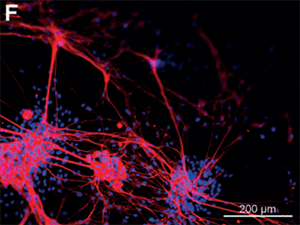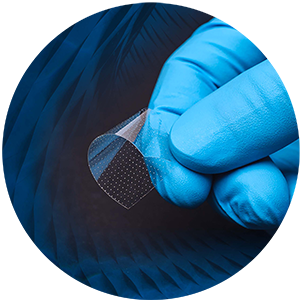PROPRIETARY PROCESSING
Checkpoint NeuroShield undergoes a proprietary processing method, resulting in a chitosan membrane with a low degree of acetylation that has been optimized for nerve repair.
PRECLINICAL EVIDENCE
Preclinical, in vitro studies have shown Schwann cell viability, migration, and proliferation on chitosan membranes, particularly those with a low degree of acetylation.1,4-6
(Left) Immunofluorescence of rat primary dissociated dorsal root ganglia (DRGs) axonal outgrowth when seeded on plain chitosan films.4

TRY CHECKPOINT NEUROSHIELD
CHITOSAN NERVE MEMBRANE
-
Freier, Thomas et al. “Controlling cell adhesion and degradation of chitosan films by N-acetylation.” Biomaterials vol. 26,29 (2005): 5872-8.
-
Haastert-Talini, K. et al. Chitosan tubes of varying degrees of acetylation for bridging peripheral nerve defects. Biomaterials 34 (2013): 9886-9904.
-
Chatelet, C et al. “Influence of the degree of acetylation on some biological properties of chitosan films.” Biomaterials vol. 22,3 (2001): 261-8.
-
Wrobel, Sandra et al. In vitro evaluation of cell seeded chitosan films for peripheral nerve tissue engineering. Tissue engineering. Part A vol. 20,17-18 (2014): 2339-49.
-
Yuan, Ying et al. “The interaction of Schwann cells with chitosan membranes and fibers in vitro.” Biomaterials vol. 25,18 (2004): 4273-8.
-
Carvalho, Cristiana R et al. “Investigation of cell adhesion in chitosan membranes for peripheral nerve regeneration.” Materials science & engineering. C, Materials for biological applications vol. 71 (2017): 1122-1134.
For complete product specifications, indications, contraindications, precautions, and warnings, please consult the Instructions for Use.
4030-MKT-025-A


